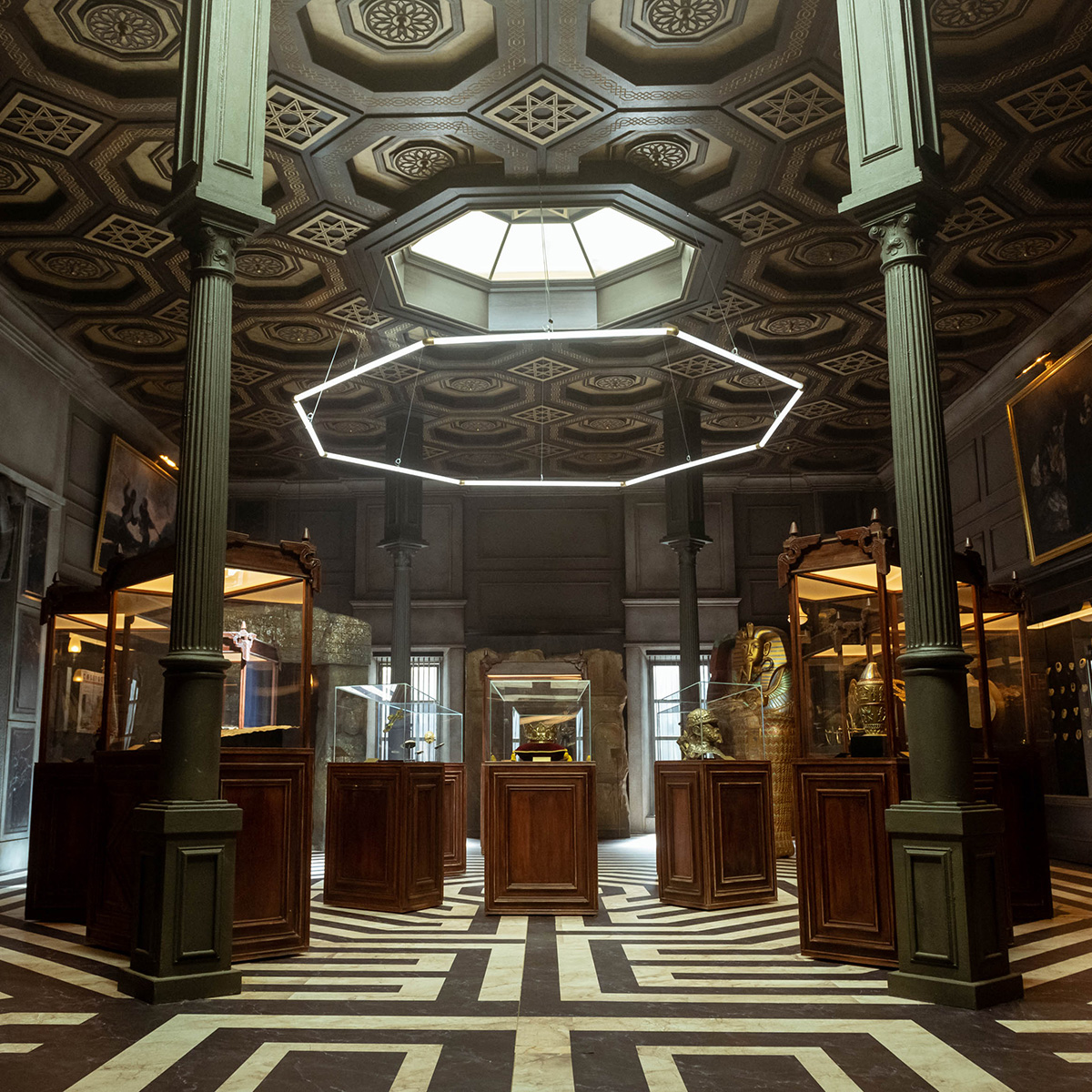Art, history and culture: the legacy of Extremadura
The Netflix series Money Heist has a special connection to Extremadura: from the creation of the script to advice from expert artisans from Extremadura on the traditional treatment of gold and the use of artisanal pieces made in Torrejoncillo, an Area of Artisanal Interest in Extremadura.
By: Manuela Sanoja
The capital of Extremadura was founded by the Romans in the year 25 BC with the name of Emerita Augusta, which was made into the imperial capital of Lusitania. If there is one area in which the city excels, it is doubtless for its historical value, which has made it a UNESCO World Heritage Site. The vestiges of the Roman city have been preserved practically intact. A large bridge which passes over the Guadiana River, a water supply system, a circus, the Temple of Diana, and the crown jewels: the theatre and the amphitheatre, where the important International Festival of Classical Theatre of Mérida takes place every year.
After enjoying days of authentic historical walks and theatrical works such as Shakespeare’s Antony and Cleopatra on the warm Mérida nights, the next city to visit is Cáceres. Here, visitors are transported to different historical eras: the medieval and Renaissance periods. Its streets, plazas, palaces and city walls (many of which were built with the riches generated from the conquest of the Americas) are the best-preserved architectural and urban works in Spain and, indeed, in Europe. Yet it’s not just city that offers impressive sights. In the province of the same name, there is also the Monastery of Santa Maria de Guadalupe, a World Heritage Site, as well as two natural spaces that have been declared Biosphere Reserves: the Monfragüe Biosphere Reserve and the Tejo/Tajo International Transboundary Biosphere Reserve. The province is also home to the Villuercas Ibores Jara UNESCO Global Geopark. All of these sites are a source of great pride for the locals. Another nearby destination worth a visit is the city of Alcantara, where a classical theatre festival is also held every summer.

Badajoz. Photo: elCarito vía Unsplash 
Cáceres. Photo: Gunnar Ridderström vía Unsplash 
Cáceres. Photo: David Gil de la Canal vía Unsplash
The cultural and historical tradition is also on display in Badajoz. The province is an ideal spot to enjoy contemporary stage dramas. It is also home to expansive art museums such as the National Museum of Roman Art, which houses Spain’s largest collection of artefacts from the Roman Empire. The Ibero-American and Extremadura Museum of Contemporary Art, offers an impressive sampling of artwork from the New World (hardly a surprise, given that a large number of the conquistadors came from the region). Both Badajoz and Cáceres have a variety of archaeological museums with collections that are unmatched in Europe.

The Roman temple of Diana (Mérida) 
Roman theatre (Mérida). Photo: Lmbuga (Luis Miguel Bugallo Sánchez), CC BY-SA 4.0, vía Wikimedia Commons 
Roman theatre (Mérida) Photo: Lmbuga (Luis Miguel Bugallo Sánchez), CC BY-SA 4.0, vía Wikimedia Commons
Beyond the history
Music and dance are other pillars of the region. The WOMAD Festival takes place every year in Cáceres, bringing together diverse melodies and dances from different parts of the world. Three annual festivals have plenty to offer for fans of folk, indie and Celtic music: Festival Folk (Plasencia), Contempopránea (Alburquerque) and El Magusto (Carbajo).
But Extremadura’s wealth goes beyond its cultural and artistic heritage. Its gastronomy is unique in the world. Although it has many flavoursome dishes of greens and vegetables, the indisputable king is pork, of which – as we all know – every part is eaten. Amongst kings, the god is pata negra, pigs which are fed exclusively on acorns, giving us the unique delicacy that is jamón ibérico. The lands of Extremadura are for shepherding, with their kitchens serving up delicacies such as caldereta de cordero (lamb stew), frito extremeño (fried lamb), cachuela (pork liver pâté), and chanfaina de cabrito (goat offal stew). From the milk of their animals come wonderful goat and sheep’s cheeses, amongst which the famous Torta del Casar has pride of place.
With a watering mouth, all that is left to say is that Extremadura is, without doubt, a destination for cinema. It comes as no surprise that it has served as the location for numerous series and films from the national and international film scenes. Renowned directors including Pedro Almodóvar, José Luis Cuerda, Mario Monicelli, and Ridley Scott have all filmed there. And who wouldn’t want to have this wonderful land of World Heritage sites as a backdrop?

Cutting ham. Photo: Via pxfuel.com 
Roman Bridge of the Arab Alcazaba (Mérida) 
International Festival of Classical Theater of Mérida. Antony and Cleopatra

